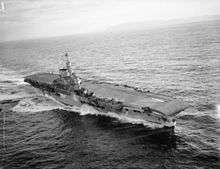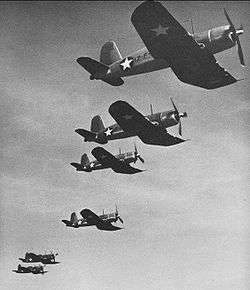Operation Crimson


Operation Crimson was a British naval operation in World War II, the objective being simultaneous naval bombardment and aerial strikes on Japanese airfields in the Indonesian cities of Sabang, Lhoknga and Kutaraja,[1] to be launched from aircraft carriers in the Indian Ocean on July 25, 1944.
Unlike some earlier operations which had used small forces for harassment and diversion of the Japanese, Operation Crimson was "a full-blooded operation" designed to "make a mess of the air base and harbour installations and wreck any vessels found sheltering there."[2]
Sailing from Trincomalee, under the command of Admiral James Somerville,[3] two aircraft carriers (HMS Victorious (pictured right) and Illustrious) were escorted by battleships HMS Queen Elizabeth, HMS Valiant, HMS Renown, and the French battleship Richelieu, as well as six cruisers (Ceylon, Cumberland, Gambia, Nigeria, Phoebe, Tromp),[1] and ten destroyers (Quality, Quickmatch, Quilliam,[4] Racehorse, Raider, Rapid, Relentless, Rocket, Roebuck, Rotherham).[5] A report of the raid states:
The force arrived at flying off position in the early hours of Tuesday 25 July and at 4am the capital ships were detached to bombard Sambang along with Cumberland, Kenya and Nigeria. At 5.25am the two carriers launched their aircraft. The raid was a success with a great deal of damage done to the Japanese forces.[1]
After the aircraft carriers had launched their early-morning aerial attacks, carried out by thirty-four Vought F4U Corsair fighters,[2] decimating the Japanese air power, the ships Tromp, Quality, Quickmatch, and Quilliam entered the harbor at Sabang and shelled Japanese positions.[6][7] The Japanese attempted to fight back, but British forces took relatively few losses, suffering damage to the Tromp and two destroyers, and the loss of two Corsairs.[2]
Operation Crimson was the final event of Admiral Somerville's military command before concerns about his health forced his transfer to diplomatic duty.[3]
References
- 1 2 3 Patrick Boniface, HMS Cumberland, page 86, 2006.
- 1 2 3 Malcolm H. Murfett, Naval Warfare 1919-45: An Operational History of the Volatile War at Sea, page 357, 2008.
- 1 2 Stanley Sandler, World War II in the Pacific: An Encyclopedia, page 729, 2001.
- ↑ Mason, Geoffrey (2003). "HMS QUILLIAM". Naval History. Retrieved 19 October 2013.
- ↑ ""BISHOP" - BEIF Covering operation for Rangoon Landing". Royal Navy in Pacific and Indian Oceans area. Retrieved 19 October 2013.
- ↑ Table of actions by Royal Navy.